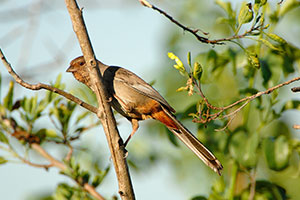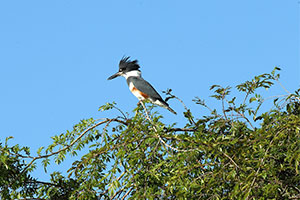Whittier Narrows
NATURE CENTER

NATURE CENTER

More than 300 bird species have been observed in the park, including the protected White-tailed Kite, the endangered Least Bell's Vireo, and the California gnatcatcher. Northern Cardinals released nearby in 1923 still thrive in the area and can be spotted regularly on the grounds. The Natural Areas are home to many varieties of raptors including American Kestrels, Cooper's hawks, Turkey vultures, Red-tailed and Red-shouldered hawks..
Whittier Narrows Nature Center Associates (WNNCA) is a chapter of the Nature Center Associates (NCA); a non-profit group of the natural area park system of Los Angeles County. We were founded to enrich the educational and scientific knowledge of our community. Our primary mission is to develop in children and adults an appreciation of the natural world and to preserve Whittier Narrows Nature Center as a natural area for future generations.


The California towhee (Melozone crissalis) is a bird of the family Emberizidae, native to the coastal regions of western Oregon and California in the
LEARN MORE
The Belted Kingfisher (Megaceryle alcyon) is a large, conspicuous water kingfisher in North America
LEARN MORE.jpg)
The most common culinary species is the Indian fig opuntia (O. ficus-indica). Most culinary uses of the term "prickly pear" refer to this species. Pri
LEARN MORE